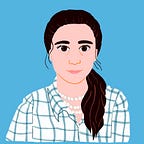Dig deep into user experiences for a better product
When I was a teacher, I never had to question whether or not the lesson plans I designed were meeting my students’ needs. They told me. Bluntly. Sometimes loudly. As I learned and grew, and as I got to know my students better, I improved my lesson quality, and students saw more success in their assessments.
Still, that was only possible because I worked with the same set of students for a year or more. I asked them questions constantly. I tested my hypotheses about what would or wouldn’t work for my users several times a day, and I never lacked for feedback. If my hypothesis was validated, I moved forward. If not, I analyzed what my students were telling me and changed direction accordingly.
The more feedback I received, the more my own assumptions disappeared . I learned that lesson design is about what my students need and not about what I think they need.
As a UX/UI designer, my users are rarely teenagers, and I spend much less time with them. But we’re supposed to test early and often, right? That’s not as easy during a global pandemic when users are less available. However, their input is more relevant than ever as I learned in interviews for a recent project.
I have been developing a sleep app that would, like many other apps, help users develop better sleep habits. I came at the problem with plenty of assumptions and confidence. I’m a night owl and aspiring morning person. I was pretty sure I knew what the solution was, because the solution was an app that would work…for me.
Time for user research. I interviewed five potential users who, like me, struggle to get to bed on time. The insights I gathered through digging deep into people’s habits were much more meaningful than I expected. The people I interviewed spoke about their sleep patterns with emotion I did not predict. Their stories — all five of them — reflected almost the exact same habits and personal judgments:
- I often get in bed by 11, but I’m on my phone until 2 or 3am. It’s mostly because I lose track of time scrolling through social media like Instagram, TikTok, and Facebook.
- I wake up in the morning feeling awful. I need coffee and don’t feel productive for a the first few hours of my day.
- I’m ashamed of my habits. I know I shouldn’t be like this.
That last part hit me the hardest. Though the users I spoke to had such similar habits, they were ashamed. They were hesitant when they spoke to me, and laughed off their admissions that they stayed up that late or were that addicted to their phones. They prefaced their answers with “Okay, I know I shouldn’t do this, but…”
My users thought they were alone, but after such similar interview results, it was clear that they were not.
These insights led me in a new direction. It isn’t just that users want to learn sleep strategies. It’s that their use of social media — which has already increased across the population since the start of the pandemic(1) — makes them feel…miserable. Physically, they’re not in a good place when they wake up. Mentally, they’re feeling groggy, grumpy, and unhappy about the day ahead. Emotionally, they’re feeling shame and frustration with themselves about their choices. They feel like they’re the only ones experiencing these struggles.
While I could have created an app that focused on teaching users sleep habits and sharing best practices, I had a new vision.
- How might we leverage users’ interest in (and perhaps addiction to) social media to build communities of people trying to get good sleep?
- How might we use social media as a way to distance people from social media before bed? How might we remind people that they’re not alone?
My solution is a sleep app called Good Mornings. Users will have access to familiar sleep app features, like bedtime reminders, and familiar habit forming app features, like setting goals and tracking progress. Now there’s also a social element, one that allows users to engage with their friends. Social accountability increases success, and perhaps more importantly, social media-type features remind users that they are not the only ones with these “bad” habits. Perhaps we can even reframe “bad” habits as a reasonable reaction to a society that has become heavily reliant on phones and one where social interactions have turned into social distance and isolation. Staying up late, even until 2 or 3, isn’t “bad.” It’s something a lot of us do, like eating too much sugar or waiting too long to fold the laundry, and a lot of us want to be better about.
When designing for adults, you may be met with reluctance, something I didn’t experience nearly as much working with teens. You may come to the table with assumptions that you need to put aside. But when you really listen to your users and truly commit to digging into those motivations that live below the surface, you can learn much more than you predicted. And it makes your final product that much better.
Follow me on Medium to see the good mornings case study once it’s posted!
(1) The Virus Changed the Way We Internet, by Ella Koeze and Nathaniel Popper, published 4/7/20 in the New York Times.
Thank you to https://undraw.co/ for the illustrations.
